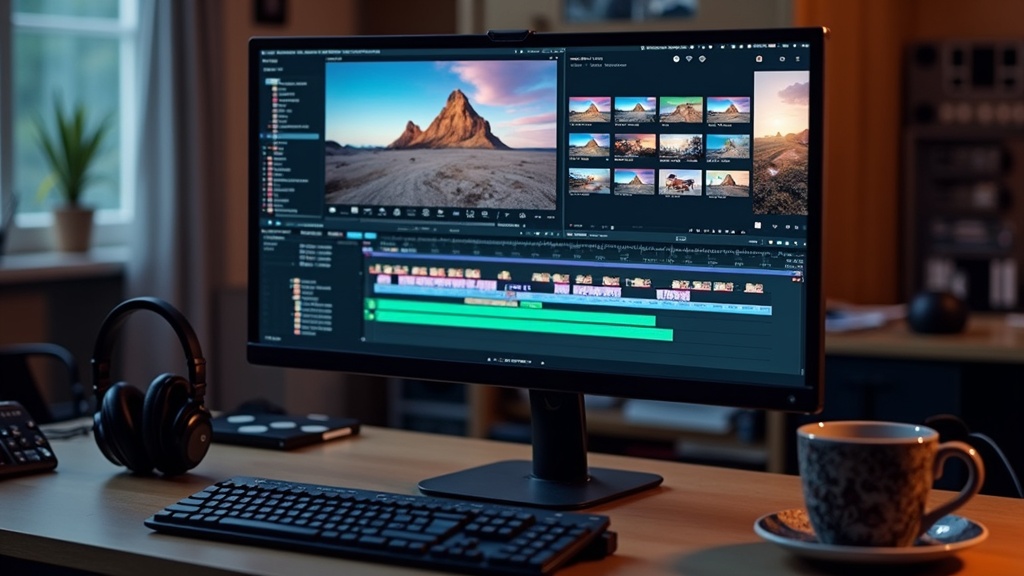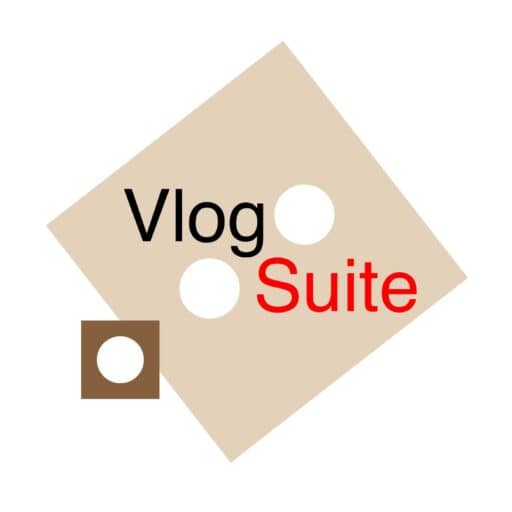
Master The Art Of Vlog Pacing
Vlog pacing is one of those skills that makes a massive difference when telling stories on camera. The right pace keeps viewers interested, helps your personality shine, and lets your content feel snappy instead of dragging on. Over the years, I’ve tweaked my pacing through lots of trial and error, and I’ve found that mastering this part of editing can help push a vlog from “just okay” to “super bingeable.” In this all-in-one article, I’m sharing techniques and mindset changes I’ve learned for getting vlog pacing right, from everyday hacks to advanced tricks that editors use to keep things lively. Let’s jump in and look at how you can step up your vlogging game.
Why Vlog Pacing Matters For Engaging Videos
Pacing influences how viewers feel while watching your vlogs. If the pace is too slow, attention drops off fast. When it’s too breakneck, people might feel overwhelmed and click away. The sweet spot is where the story flows naturally, scenes change at the right times, and you guide your viewers’ emotions without them even realizing it. As YouTube and TikTok’s algorithms keep pushing shorter, more dynamic content, learning how to control the rhythm of your edits matters more than ever for keeping those precious watch minutes up.
Great pacing isn’t about rushing. It’s about knowing when to move things forward and when to slow down so a joke can land or a scene can breathe. This skill shows up in every popular vlogger or creator’s work, no matter their editing style. Getting comfortable with it instantly helps your vlogs feel smoother and more memorable.
Get Started with Foundation Steps For Better Vlog Pacing
If you’re new to editing or vlogging, the world of jump cuts, B-roll, and transitions can feel nuts. I remember my first projects feeling all over the place, but with a bit of practice, basic pacing starts to make sense. Here are some foundation steps that I still lean on:
- Plan Your Story: Even quick vlogs benefit from a rough outline. Knowing the beginning, middle, and end helps you cut out fluff and stick to moments that matter.
- Use Natural Breaks: Think of when one idea wraps up and the next begins. These are solid spots to cut to new scenes or B-roll.
- Trim The Fat: Watch every clip and see if parts drag. I’m ruthless in cutting out long pauses, filler words, or any repeats that kill momentum.
- Let Big Moments Breathe: Jokes, reactions, or reveals work better when you give them a pause or linger a moment so viewers can react with you.
Quick Start Guide To Polished Vlog Pacing
Building pacing habits from the start helps a ton, even for amateur vloggers working from their phones. Below are some steps I’ve used both in my beginner and pro days:
- Watch Your Clips All The Way Through: Take notes on where you feel bored or distracted. That’s probably where your audience will zone out, too.
- Test Different Cuts: Try cutting the same moment short and then letting it run longer. Play both edits for friends or yourself to feel which flows better.
- Add B-Roll Or Photos: When talking goes on too long, drop in images, cutaways, or montage footage to break things up.
- Use Background Music Wisely: Lowkey music helps set rhythm, but don’t let it overpower speech or action. Bring volume up slightly during transitions to boost energy.
- Trust Your Gut: If a scene feels boring to you, it probably is. Don’t be afraid to chop or rearrange until it feels right.
Following these steps makes a big difference, especially as you watch older vlogs and spot parts that feel slower than you’d like. Don’t be afraid to change your approach based on feedback or your own viewing experience; adapting is key for leveling up over time.
Common Pacing Pitfalls (And How To Fix Them)
Pacing can throw even talented creators for a loop. I’ve struggled with the urge to leave in everything because “it’s all important,” but tighter edits always win. Here are some challenges most vloggers face, and what I do about them:
- Keeping Only The Best Bits: The main story gets lost if you leave every little detail in. Focus your edits so every clip adds value or emotion to your vlog.
- Monotonous Talking: Too much backtoback talking can tire viewers. Rotate between directtocamera, B-roll, text, or location changes to break things up.
- Overuse Of Jump Cuts: Quick jump cuts can be jarring if overdone. Mix in smoother transitions, panning shots, or music to create variety.
- Background Music Issues: Odd music choices or badly timed transitions can wreck pacing. Match music tempo and energy with what’s happening onscreen.
Fix Monotonous Talking
I’ve noticed that even a few seconds of the same thing can feel long, especially when I’m editing a Q&A or storytime segment. Dropping in quick B-roll or adding a cutaway to what I’m talking about keeps viewers visually interested while I share info. Sometimes, just sliding in a sound effect or text label adds enough of a break to reset the pace.
Transition Tricks
Even basic transitions, like a quick dip to white or a swish swish sound, serve as a “breath” in the story. Tiny touches like these really help signal a scene switch and let viewers process what just happened. I build transitions into my editing rhythm so every segment feels deliberate and the flow doesn’t drag.
Expert Hacks For Smoother Vlog Pacing
Once you’re comfortable cutting out longwinded moments and keeping things tight, there are a few nextlevel tactics to push your pacing into pro territory:
Match Edits To The Beat: When using music, sync up your visual cuts or transitions to land on a drum hit or musical cue. This creates a rhythm that keeps things feeling fresh.
Use Lcuts And Jcuts: These are editing moves where audio or video from one scene starts before or after the actual cut. For example: let audio from the next scene start while you’re still watching the previous clip. This keeps vlogs moving smoothly instead of chunkily jumping to each new part.
Montage With Purpose: Slide in quick montages of travel, reactions, or the “inbetween” moments to keep pace up during slower parts, like walking from scene to scene.
All these tricks help your vlogs feel more like a cohesive story than a collection of random footage. Over time, you’ll get a sense of when to use each trick for maximum viewer retention.
Real-World Examples & Scenarios
I often think about how pacing shows up in different vlog genres. Here are a few examples based on my own edits and ones I admire:
- Travel Vlogs: Switching from talking to quick scenic shots, food clips, and goofy outtakes helps keep the flow exciting as you hop between locations. Using fast-paced background music during action shots, then letting it quiet down for reflective moments, can keep viewers hooked throughout your adventure.
- Unboxings: Tight cuts for unwrapping, closeups on details, and reactions spaced out with music stings speeds things up, but pausing for surprise or wow moments adds fun contrast. You can also use quick text popups for key takeaways to emphasize your reactions.
- Daily Vlogs: Swapping mundane moments such as breakfast or car rides for fast montages, and focusing on highlights, lets viewers follow along without getting bored. Short time lapses in these sections can be really eye-catching and break up slower portions.
- Storytime Vlogs: Jumping between the storyteller and related visuals, old photos, or memes breaks up long monologues and adds rhythm. Sound effects when hitting punchlines can also keep things punchy and entertaining.
Frequently Asked Vlog Pacing Questions
Vlog pacing is something most creators have questions about, especially after their first few uploads. Here are a few questions I hear a lot:
Question: How do I know if my vlog is too slow?
Answer: If you find yourself skipping through your own video, your audience will too. Ask friends for a “boredom check” or compare to vlogs you enjoy to feel what works. Try timing your scenes and see if your cut matches the energy you’re aiming for.
Question: Can you pace a vlog too quickly?
Answer: Pacing really fast can be exhausting for viewers. If nobody has a moment to react or process what’s happening, your story loses its punch. Watch your edit. If you feel breathless, try adding a pause or slower scenes. Switching rhythms throughout your video can add depth.
Question: Should every vlog have the same pacing?
Answer: Every genre and personal style is different. Action vlogs or comedy sketches often work well with rapid cuts, while travel or nature vlogs usually benefit from a mix of fast and slow moments. Let the story and your mood guide the pace that works best for you.
Vlog Pacing And The Gear You Use
Your equipment can actually make pacing easier. Cameras with fast autofocus and solid builtin mics mean you spend less time cleaning up footage. I’ve found it easier to keep the rhythm right when I’m confident my gear can keep up with my movements or pick up all my lines on the first take. Plus, using a tripod can help capture different angles quickly during a shoot, which adds to your edit later.
Editing software plays a role too. Tools like Adobe Premiere, Final Cut, or even affordable apps like CapCut offer simple timeline scrubbing and split options that speed up the whole workflow. Using markers to note good moments, or even basic “autocut” plugins, helps chop out dead air fast so you can focus on telling the story. Also, color coding your scenes in the editor can help you structure your narrative visually.
- DSLRs/Action Cameras: Quick response and accessories like gimbals help you grab stable shots in motion, making montage transitions way slicker and steadier. Try setting up multiple cameras if you want to jump between angles in the edit.
- Editing Apps: Most phone apps let you split, speed up, and add music with just a tap—super handy for beginners working on mobile or creators with a fast turnaround schedule.
- Sound: Investing in a decent mic means less time fixing poor audio in editing, which really helps your pacing overall. Clean sound helps viewers focus, keeping them interested as your story moves.
Let us Mix It Up and Adapt Pacing For Your Own Style
Pacing isn’t onesizefitsall. I always suggest watching vloggers you admire and pausing to see how they do things. Are their scenes longer or shorter than yours? Do they let conversations breathe, or keep things snappy? Trying out different rhythms for your uploads is a fun experiment. You might also ask your audience for feedback, or use analytics to check which sections keep viewers watching. Eventually, you’ll settle into a workflow and pace that matches your personality and the kind of audience you want to build.
Getting vlog pacing right takes practice, but it’s worth experimenting. A bit of editing intuition and some creator tricks go a long way. The next time you’re filming or editing your vlog, keep these pacing techniques in mind. You might be surprised at how much more watchable your videos become. Wrapping up, remember that pacing is what keeps your story moving and your viewers coming back for more. Try out a few of these ideas in your next vlog and see just how much they can give your content a boost.
best vlogging editing software on amazon
The melody maker GPT
Translates text and images into music with download files.







